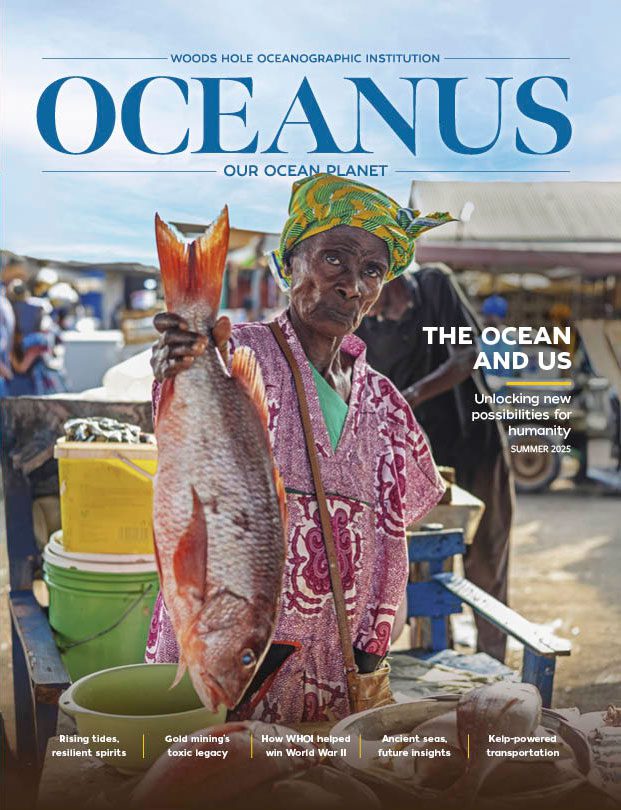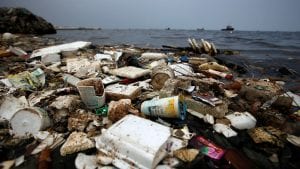Marine Microplastics
Dragons and Sharks on a Beach Near You: The Story of the Great Lego Spill
Microplastics Targeted in Surge of Consumer Greenwashing Suits
A simple way to get microplastics out of your water
Paper or plastic? Cape Cod researchers say prototype plastic straw breaks down faster than paper
Some plastic straws degrade faster than others
Accounting for plastic persistence can minimize environmental impacts
Clouds are filled with microplastics, perplexing and concerning scientists
WHOI Helps Lead Groundbreaking Study on the Human and Ocean Health Impacts of Ocean Plastics
Bacterium may help answer mystery of ‘missing’ plastic in the seas
Grappling with the biggest marine plastic spill in history
Your Take-Out Coffee Cup May Shed Trillions of Plastic ‘Nanoparticles’
United States Contributions to Global Ocean Plastic Waste
MPC Research Specialist, Hauke Kite-Powell, has recently been appointed to a National Academies of Sciences, Engineering, and Medicine committee to study U.S. contributions to global ocean plastic waste.
Tenacious citizens take on the plastics industry over an insidious pollutant
Evidence of pellet pollution has been piling up for decades. R. Jude Wilber of the Woods Hole Oceanographic Institution returned to the area and found that pellet concentrations had nearly doubled.
Microplastics & The Textile Industry
The study of marine microplastics is not new. Woods Hole Oceanographic Institution (WHOI) has been conducting research and publishing on this subject since the 1970s. Other organizations have been active as well.
Starting Oct. 1, foam containers for carryout food will be banned throughout Maryland. Not everyone is happy
As the first state in the country to ban foam food containers, Maryland will be a “very good case study,” said Chris Reddy, a scientist at Woods Hole Oceanographic Institution in Massachusetts.
New Sensor to Monitor Microplastics in Cape Cod Canal
An ocean technology company installed a particle sensor Tuesday in the Cape Cod Canal to monitor plankton and potential microplastics.
Plastics’ impact on oceans under scrutiny
“We have an opportunity now, where there is public awareness,” said Mark Hahn, a senior scientist at the Woods Hole Oceanographic Institution. “They (plastics) don’t belong there (in the ocean).”
Microplastics research needs innovation, health focus
“Studying microplastics is hard because [they are] not a single contaminant like lead or a uniform contaminant like PCBs [polychlorinated biphenyls],” said NIEHS grantee Mark Hahn, Ph.D., a senior scientist at Woods Hole Oceanographic Institution. “It is a diverse and complex mixture of materials.”
How Big Oil and Big Soda kept a global environmental calamity a secret for decades
The threat to human health is complex and poorly understood. “There are a lot more questions than answers at this point,” says Mark Hahn, a toxicologist at WHOI who studies microplastics.
Study: Styrofoam Might Last Only Decades, Not Millennia, in the Ocean
Researchers from MIT and the Woods Hole Oceanographic Institution say that sunlight can break down polystyrene within a few decades.
In the Sea, Not All Plastic Lasts Forever
Polystyrene, a common ocean pollutant, decomposes in sunlight much faster than thought, a new study finds.
Microplastics Found In The Ocean And In Human Poop
Where are the sources of these microplastics? Well, as a Woods Hole Oceanographic Institution video explains, some of the microplastics may be coming from larger plastic objects such as bottles and other households goods being ground up by the elements.









